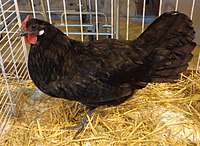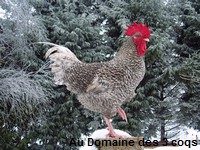This is a list of the chicken breeds usually considered to be of French origin. [1] [2] [3] Some may have complex or obscure histories, so inclusion here does not necessarily imply that a breed is predominantly or exclusively from France. Not all of these breeds have existed continuously since they were first described; some, like the Pavilly, Merlerault and Caumont, became extinct in the early twentieth century and were later recreated. [4] [ page needed ]






















